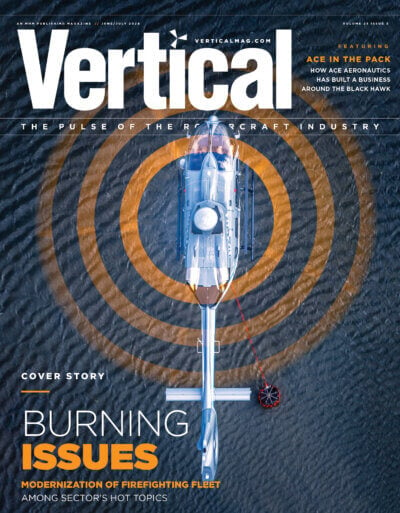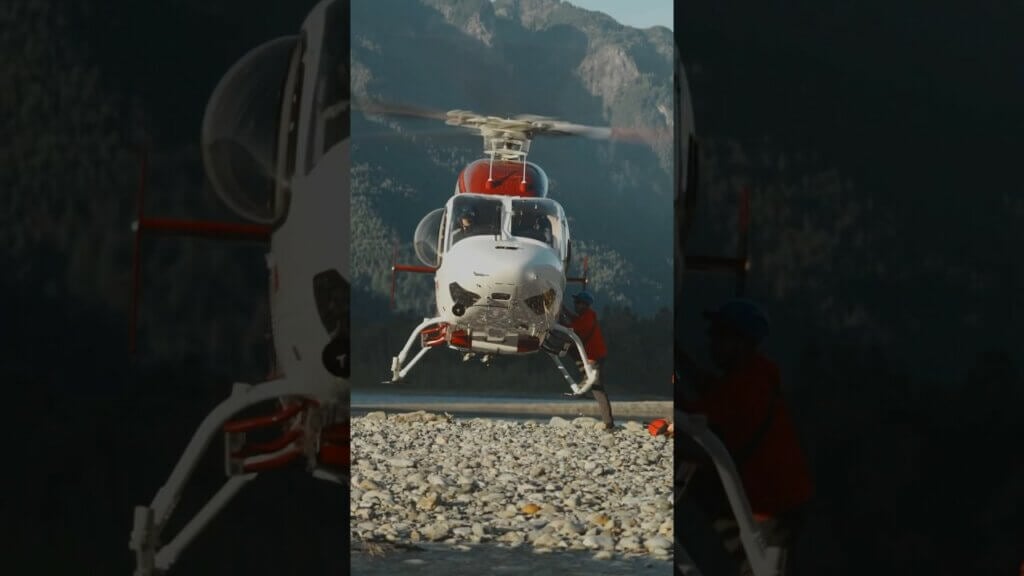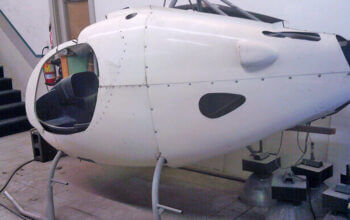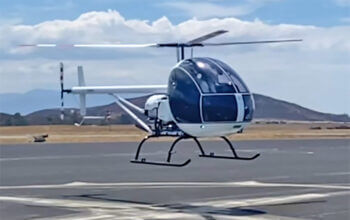The Bell V-280 Valor is the U.S. Army’s Future Long-Range Assault Aircraft (FLRAA), a huge win for the manufacturer that will underpin its production line for decades to come.
Bell was initially awarded the FLRAA contract in December 2022, selected over the Sikorsky-Boeing Defiant X compound coaxial helicopter. The Sikorsky-Boeing team subsequently protested to overturn the decision, but this was denied by the Government Accountability Office in April, giving Bell the green light to push on with the program.

The initial $232-million contract will see Bell work on the preliminary design of the aircraft and produce “virtual” prototypes. But over the course of its lifetime, the FLRAA award — part of the U.S. Army’s Future Vertical Lift (FVL) initiative — could be worth billions of dollars.
Frank Lazzara, the company’s director of FLRAA sales and strategy, told Vertical about how the contract will impact Bell’s manufacturing facilities and technological ambitions for the coming years.
“This is a once-in-a-generation opportunity for Team Valor, a company like Bell, and technology like advanced tiltrotors,” he said. “This is a very important opportunity for us to get back into the army formation. [It is too early to say] what the long-term upside looks like, but from a capability perspective, it’s enormously positive for the U.S. Army, the U.S., and a lot of our security cooperation partners around the world.”
Bell’s manufacturing work was well underway before the contract announcement, Lazarra said. For example, he pointed to the Manufacturing Technology Center (MTC) that was unveiled in Fort Worth, Texas, in August 2020.
“We put a lot of investment into being able to manufacture aircraft and looking at how to reduce costs, reduce manufacturing time, deliver higher quality — all of the things that are critical when you’re involved in a program of this size over the long haul,” he said.
He pointed to the development of a new FLRAA Drive System Test Lab in Grand Prairie, Texas, as well as its Systems Integration Lab. This will be located on the same site as its Flight Research Center in Arlington, Texas.
The MTC is a 140,000-square-foot (13,000-square-meter) facility, which according to the company, is monitored and controlled by a network comprising Internet of Things, IT and cybersecurity systems. It is designed to “operate like a massive computer,” according to Bell, and features a digital twin of itself to monitor the building, its equipment, operations and processes.

Lazarra said the new center has technology that can significantly reduce the length of time it takes to produce particular components. He said this technology would “reduce things that used to take days, weeks or months to manufacture down to hours because it’s all done on the same machine or in the same center.”
Advances in digital technology have also had a critical impact on development of the V-280. Primarily, this technology has been introduced because the Army customer is increasingly focused on “collaborating in a common environment,” Lazarra said, with greater integration between different aspects of the program development.
“Previously, a particular specialty would be given a task and a certain amount of space in the area where they need to do the design work, but they were not seeing the other design work that’s going on in the same area of the aircraft,” he said. “Now in the digital environment, they will not inadvertently design something that is going to drive redesign somewhere else, unless there’s a necessity.”
Digital threats and digital twins — what Lazarra terms a “digital archive” — have been useful in the project, for example, in terms of maintaining the currency of technical manuals. The ability to take information as the system is being designed and decisions are being made is useful in maintenance, he said, as well as making design decisions based on the outcome of a particular procedure in real time.
“Our U.S. government teammate wants to take advantage of everything the digital environment provides,” he said. “That is modeling, testing and taking model-based systems engineering to the next level.”
Bell has previously highlighted aspects of the V-280’s design that will positively impact its manufacturing process, such as the fixed engine nacelle. This was implemented from the early stages of design, with the team identifying around 100 lessons learned from the V-22 that they could use to improve the new platform, Lazarra explained.
“What are the things that are driving higher maintenance, or complexity for the manufacturing side? At the point of design, you intentionally design those out.”
The company is also working to improve the nacelle on some existing U.S. Air Force CV-22s through an ongoing program, he noted.
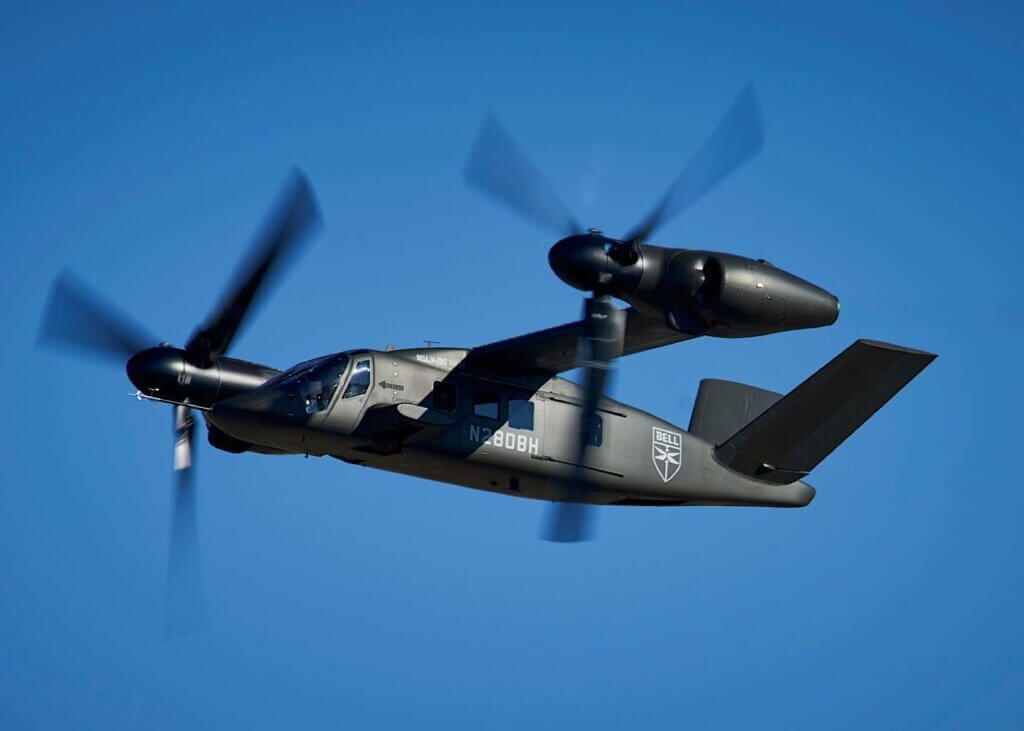
Additionally, Lazzara pointed to the wing design, with the V-280 benefiting from a simpler design that is easier to manufacture.
“The V-280 is a straight wing design … whereas the V-22 wing was a little more intricate in the way that wing had to be produced. Our design on the V-280 reduced manufacturing time and cost by about 50%.”
Lazarra said the improved nacelle and wing design were the main developments that will enhance both the aircraft itself and Bell’s design and manufacturing processes. However, there are other examples, he said, such as the proprotor blades have an improved design aimed at reducing wear and tear.
There have also been lessons learned applied to the fly-by-wire system and the hydraulics system. He could not disclose details, but said the latter “requires less pressure on the V-280 and therefore, less wear and tear — that’s a lot of energy in those very small pathways, so that is a pretty big advantage.”
On top of that, he pointed to the inlet barrier filters that were included by Rolls-Royce in the engines, which improve protection of the powerplants.
“Even down at the component level … part of the nacelle improvement on V-22 is the wiring and how those wiring bundles are made and designed to handle the work they do on an aircraft like a tiltrotor, which flies both like a helicopter and an aeroplane,” he said. “Wiring can be a high maintenance driver on all rotary-wing aircraft typically because of some of the vibratory pathways, which … have a higher demand on some of the components than it might on a fixed-wing aircraft.”
At a personal level, Lazarra retired from the U.S. Air Force in 2016 after a career lasting more than 18 years, with 12 years of tiltrotor experience. He is a firm believer in the technology and the need to preserve a tiltrotor industrial base in the U.S.
“It’s not even just for the warfighter who’s going to fly the V-280, but well beyond that — the technology derivatives that are going to come from that.”
Looking to the future, Lazarra pointed to potential opportunities with other U.S. services, as well as internationally.
“I think this capability in the hands of our key security cooperation partners will be crucial, but that all comes down to execution [of the current phase of the program],” he said. “We need to execute now to make that possible.”




